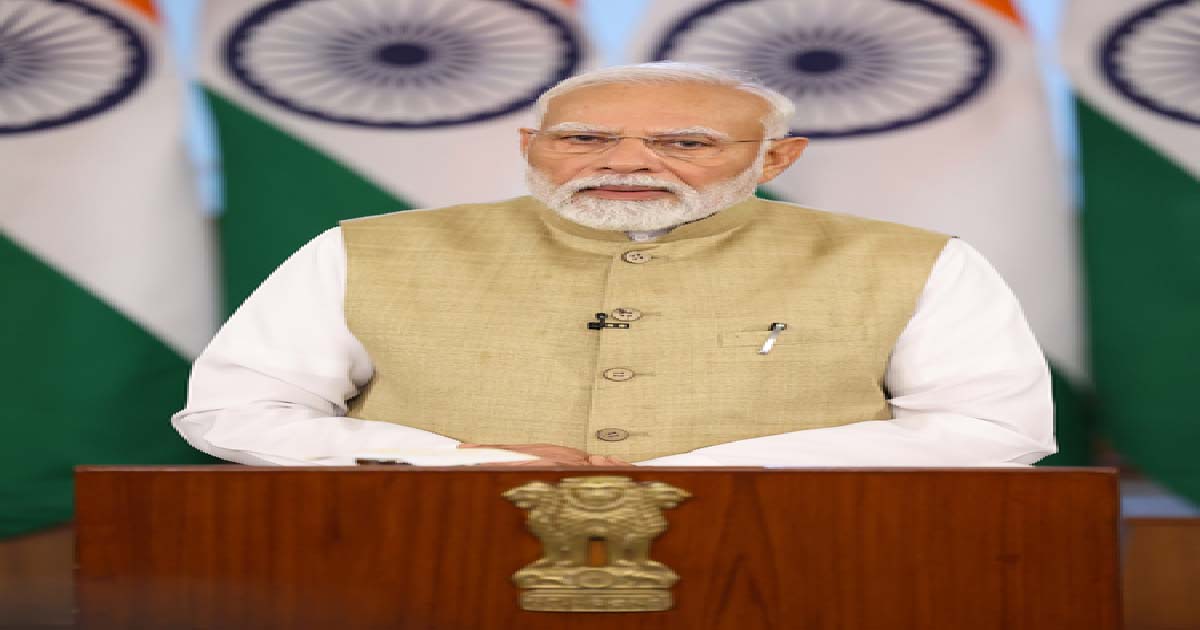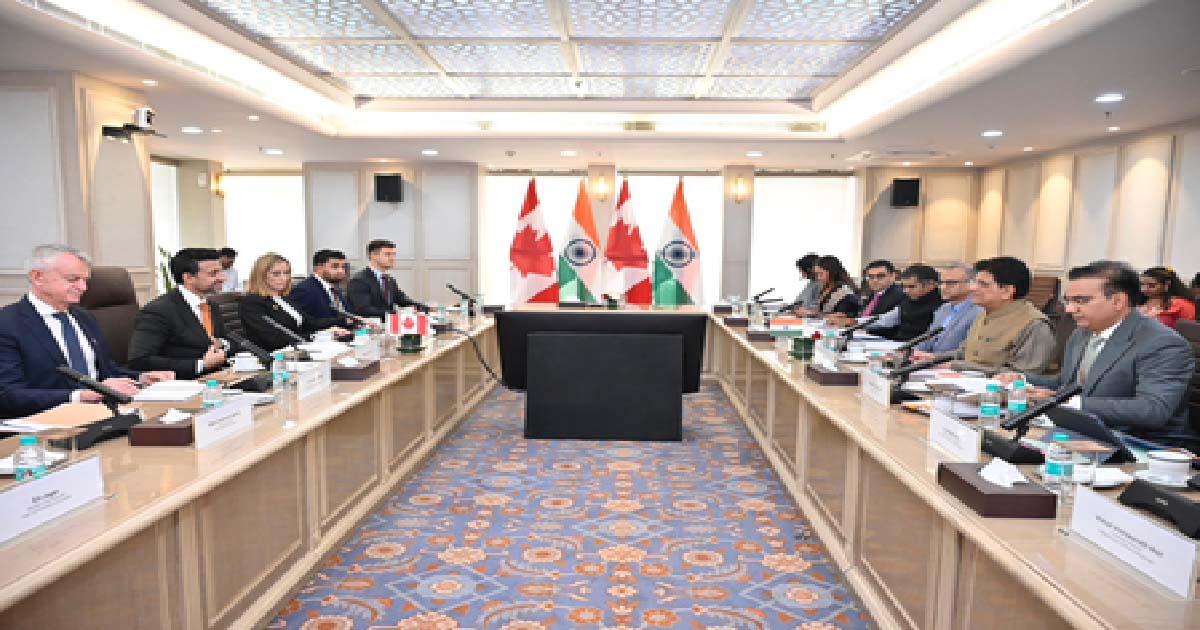International News
With 2 missing Indians ‘killed’, is Kenya safe?
The report on two Indians missing in Kenya for more than 90 days, and their subsequent “killing”, as claimed by the Kenyan President’s aide last week, has raised questions on the safety of Indians living in and travelling to the East African nation.
Mohammad Zaid Sami Kidwai and Zulfiqar Ahmed Khan, who went to Kenya in April to help with President William Ruto’s social media campaign, were killed by the DCI (Directorate of Criminal Investigations) unit, Ruto’s aide Dennis Itumbi said in a Facebook post.
The now-disbanded Special Service Unit was alleged to have been behind several cases of extrajudicial killings and enforced disappearances of both citizens and foreign nationals.
India has described as “very disturbing” the events surrounding the abduction of its nationals in Kenya and the subsequent lack of information in the case.
“I’ve spent one year and seven months in Nairobi and from that, I can say Nairobi is pretty much safe for Indians. However, always have a local Kenyan person to accompany you and keep your car windows shut,” Atul Jha, who lived in Nairobi from 2016 to 2018, said.
“Kenya has a big community of Indians. It is safe for Indians or any other expatriate to live and work here,” Om Sharma, who keeps travelling to Kenya for work, told IANS.
In a 2017 incident that led to widespread outrage in Kenya, a 32-year-old businessman of Indian origin Bunty Shah was shot dead by the police inside his home in a case of mistaken identity. He was declared dead on arrival at the hospital.
Bunty Shah belonged to a Gujarati family that owns Bobmil Industries Ltd, a mattress manufacturing company in Nairobi.
In a similar case recently, Pakistani journalist Arshad Sharif was shot dead in a “case of mistaken identity”.
But what shook the Indian community was a 2013 terrorist attack on Westgate centre in Kenya by al-Shabab militants, which killed three Indians, including an eight-year-old boy, and left many others injured.
One of the victims, 40-year-old Sridhar Natarajan was working with a pharma firm, the boy Paramshu Jain was the son of a manager of the local Bank of Baroda branch. The third victim, Sudharshan B. Nagaraj, was from Bengaluru.
In the 2008 violence that erupted after former President Mwai Kibaki was declared the winner of the presidential election, looting of Indian shops were reported in Kenya.
As such, there is no official travel advisory from the Indian side and hundreds of Indians are doing business and jobs in Kenya.
However, a US government advisory released this month says that crime is high in Kenya, and incidents of armed robbery, carjacking, kidnapping and muggings are seen in Nairobi and Mombasa.
“Local police are willing but often lack the capability to respond effectively to serious criminal incidents and terrorist attacks,” the advisory noted.
An Australian travel advisory updated today said: “Don’t walk around after dark. If you live in Kenya, invest in strong personal security measures… Attacks could occur at any time and with little or no warning”.
Close to a lakh people living in Kenya are Indians, and they wield considerable political and economic power. The Indians also make up the 44th tribe in Kenya.
The tourism board in Kenya wants a 40 per cent increase in Indian tourists to Kenya, and wants Bollywood filmmakers to shoot in the African country.
During the last 10 years, the Indian market has grown to be the third largest tourism source market for Kenya representing a market share of 7.3 per cent of total tourist arrivals into Kenya.
Records show that 31,983 Indian workers came to Kenya in the early 19th centrury as indentured labourers.
They worked as traders and farmers on the railway system that the British were building in east Africa.
The majority of Indians trace their ancestry to the regions of Rajasthan, Gujarat, and Punjab. There are also large numbers who originate from Maharashtra, Odisha, Goa and Tamil Nadu.
Most are found in the major urban areas of Nairobi and Mombasa, and are mainly engaged in construction, metal and retail businesses. Some work in banks. They also own vast tracts of farmland in the countryside.
International News
‘My thoughts with those who lost loved ones’: PM Modi on Saudi bus accident

New Delhi, Nov 17: Prime Minister Narendra Modi on Monday expressed deep sadness over the loss of lives in the Saudi Arabia bus accident involving several Indian Umrah pilgrims and prayed for the swift recovery of the injured.
A passenger bus carrying several Indian Umrah pilgrims collided with a diesel tanker early Monday morning near Medina, the Indian mission in Jeddah confirmed.
In a post on X, PM Modi said, “Deeply saddened by the accident in Medinah involving Indian nationals. My thoughts are with the families who have lost their loved ones. I pray for the swift recovery of all those injured.”
“Our Embassy in Riyadh and Consulate in Jeddah are providing all possible assistance. Our officials are also in close contact with Saudi Arabian authorities,” he added.
In the wake of the accident, the Consulate General of India in Jeddah has set up a 24/7 control room and released helpline numbers for those seeking assistance.
Preliminary unconfirmed media reports indicate that most of the pilgrims are from Hyderabad. Given the intensity of the explosion caused by the collision, casualties are feared.
According to unconfirmed media reports, the bus was travelling from Mecca to Medina, with pilgrims heading to the holy city after completing their rituals in Mecca. All passengers were reportedly asleep when the crash occurred.
Rescue operations are underway, and local residents have rushed to the scene to assist those severely injured. The exact number of casualties has not yet been officially confirmed.
Further updates are awaited.
Telangana Chief Minister A. Revanth Reddy also condoled the loss of lives in the horrific accident involving a bus carrying Indian pilgrims in Saudi Arabia.
The state government has also set up a control room in Hyderabad to provide information and assistance to the families of the accident victims.
Business
India, Canada discuss ways to boost bilateral trade, promote investments

New Delhi, Nov 13: Commerce and Industry Minister Piyush Goyal and Maninder Sidhu, Canada’s Minister of International Trade, discussed ways to further boost bilateral trade and promote investments, it was announced on Thursday.
Sidhu is in India to find opportunities to advance trade and investment linkages between the two nations.
“It was a pleasure to co-chair the 7th India-Canada Ministerial Dialogue on Trade and Investment as part of the New Roadmap 2025 along with @MSidhuLiberal, Canada’s Minister of International Trade,” Goyal posted on the X social media platform.
The minister further stated that they discussed “avenues to strengthen bilateral trade, promote investments and deepen cooperation between our countries”.
During his India visit, Sidhu is set to promote Canada’s commitment to supporting and growing the well-established commercial ties shared by Canada and India, including artificial intelligence, clean technology and digital industries, and explore new opportunities for partnerships that benefit workers and businesses in both countries.
“This visit to India will reinforce Canada’s commitment to diversifying our trade relationships and attracting new investment,” an official statement quoting Sidhu said. “As one of the fastest-growing major economies, India offers significant opportunities for Canadian businesses and workers. Our commercial ties continue to expand — bilateral trade surpassed $30 billion in 2024 — and there is even greater potential ahead,” the statement added.
India is a key partner as Canada strengthens its economic links in the Indo-Pacific region under a comprehensive strategy for the region. In 2024, India was Canada’s seventh-largest goods and services trading partner, with two-way trade valued at $30.9 billion.
Meanwhile, External Affairs Minister (EAM) S. Jaishankar and his Canadian counterpart, Anita Anand, held discussions on strengthening cooperation across key sectors, including trade, energy and security. Both leaders met on the sidelines of the G7 Foreign Ministers’ Meeting in Niagara.
EAM Jaishankar also praised the progress made under the New Roadmap 2025, aimed at enhancing bilateral ties between India and Canada and expressed hope for rebuilding a stronger partnership.
Crime
Banned drugs worth Rs 45 crore smuggled from Myanmar seized in Mizoram; two held

Aizawl, Nov 13: The Assam Rifles, in a joint operation with Mizoram Police, recovered highly addictive Methamphetamine tablets valued at Rs 45 crore from Saitual district and arrested two drug peddlers, officials said on Thursday.
A defence spokesman said that based on specific intelligence about the movement of drugs on the Ngopa-Saitual road in northern Mizoram’s Saitual district, a joint operation was launched on the intervening night of Wednesday and Thursday.
The team of Assam Rifles established a vehicle check post, which intercepted the suspected vehicle carrying drugs at Ngopa.
During the search operation, 15 kg of banned Methamphetamine tablets worth Rs 45 crore were recovered from two persons — Rabizul Haq and Naasiruddin, both residents of Barpeta in western Assam.
Recovered contraband, smuggled from Myanmar, along with apprehended individuals and their vehicle, were handed over to the Saitual district Police for detailed investigation and further legal proceedings.
As part of its continuous efforts to curb the spread of the drug menace in Mizoram, the Assam Rifles conducted yet another successful anti-narcotics operation, the spokesman said.
Meanwhile, the Assam Rifles, in a joint operation with Assam Police, recovered heroin valued at Rs 4.65 crore from near Jhujang Pahar in Cachar district of southern Assam on November 11.
The November 11 drug seizure took place within two days in the same Cachar district.
The Assam Rifles, in a similar joint operation with Assam Police, recovered methamphetamine tablets worth Rs 6 crore on November 9. The banned methamphetamine tablets, also known as Yaba or party tablets, contain a mixture of methamphetamine and caffeine and are commonly referred to as the ‘crazy drug’.
The highly addictive drugs are very popular among drug addicts in India, Bangladesh and the neighbouring countries.
Notably, Myanmar shares a 1,643-km-long unfenced border with four Northeastern states — Mizoram, Arunachal Pradesh, Manipur and Nagaland — which serve as a key transit point for drugs, particularly heroin and methamphetamine tablets.
At least six of the 10 districts of Mizoram — Champhai, Siaha, Lawngtlai, Hnahthial, Saitual and Serchhip — share a 510-km border with Myanmar. Mizoram, Manipur, Tripura and southern Assam have turned into major corridors for drug smuggling from Myanmar, with the illegal consignments being ferried to other parts of the country and abroad.
-

 Crime3 years ago
Crime3 years agoClass 10 student jumps to death in Jaipur
-

 Maharashtra1 year ago
Maharashtra1 year agoMumbai Local Train Update: Central Railway’s New Timetable Comes Into Effect; Check Full List Of Revised Timings & Stations
-

 Maharashtra1 year ago
Maharashtra1 year agoMumbai To Go Toll-Free Tonight! Maharashtra Govt Announces Complete Toll Waiver For Light Motor Vehicles At All 5 Entry Points Of City
-

 Maharashtra1 year ago
Maharashtra1 year agoFalse photo of Imtiaz Jaleel’s rally, exposing the fooling conspiracy
-

 National News1 year ago
National News1 year agoMinistry of Railways rolls out Special Drive 4.0 with focus on digitisation, cleanliness, inclusiveness and grievance redressal
-

 Maharashtra1 year ago
Maharashtra1 year agoMaharashtra Elections 2024: Mumbai Metro & BEST Services Extended Till Midnight On Voting Day
-

 National News1 year ago
National News1 year agoJ&K: 4 Jawans Killed, 28 Injured After Bus Carrying BSF Personnel For Poll Duty Falls Into Gorge In Budgam; Terrifying Visuals Surface
-

 Crime1 year ago
Crime1 year agoBaba Siddique Murder: Mumbai Police Unable To Get Lawrence Bishnoi Custody Due To Home Ministry Order, Says Report












